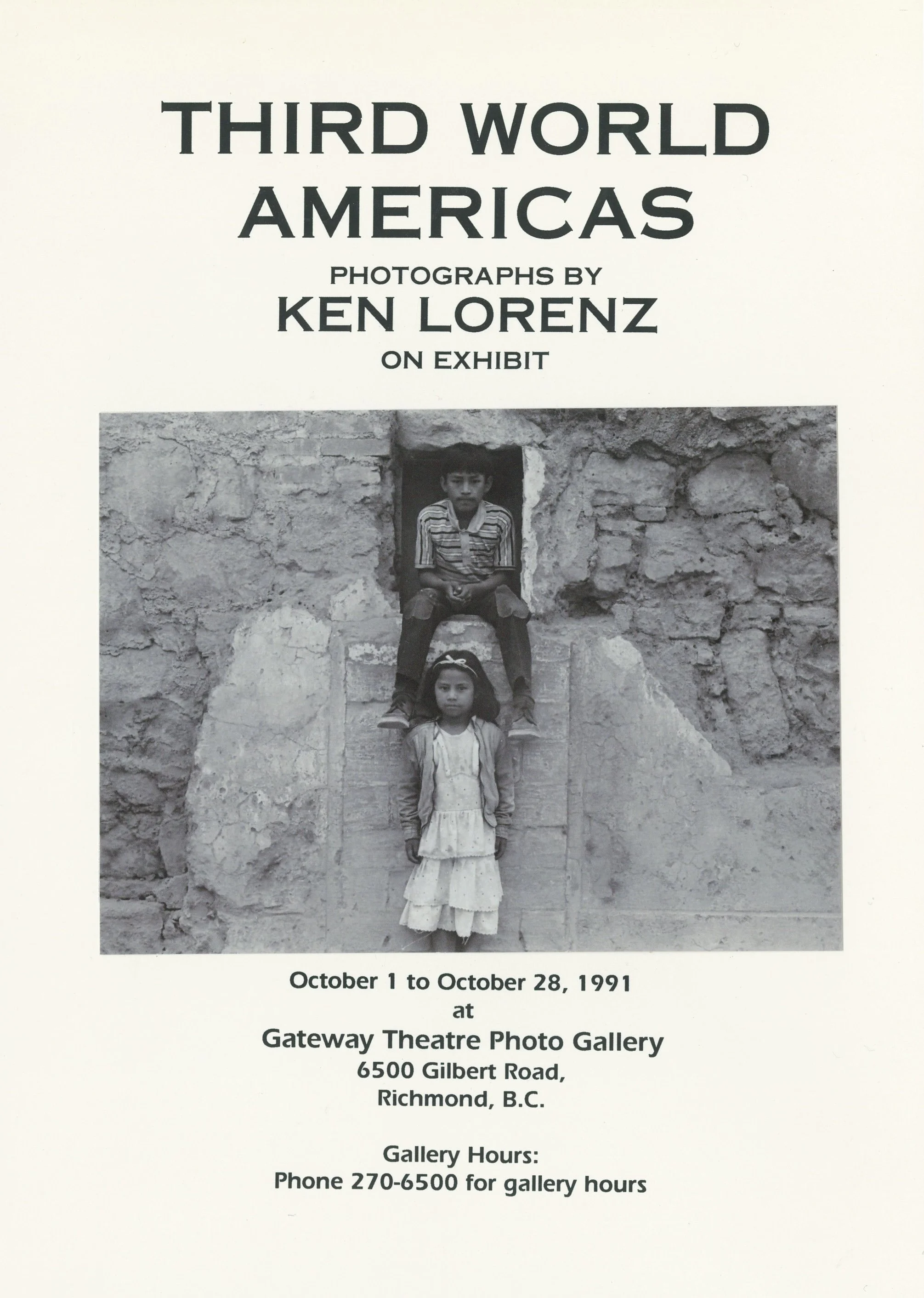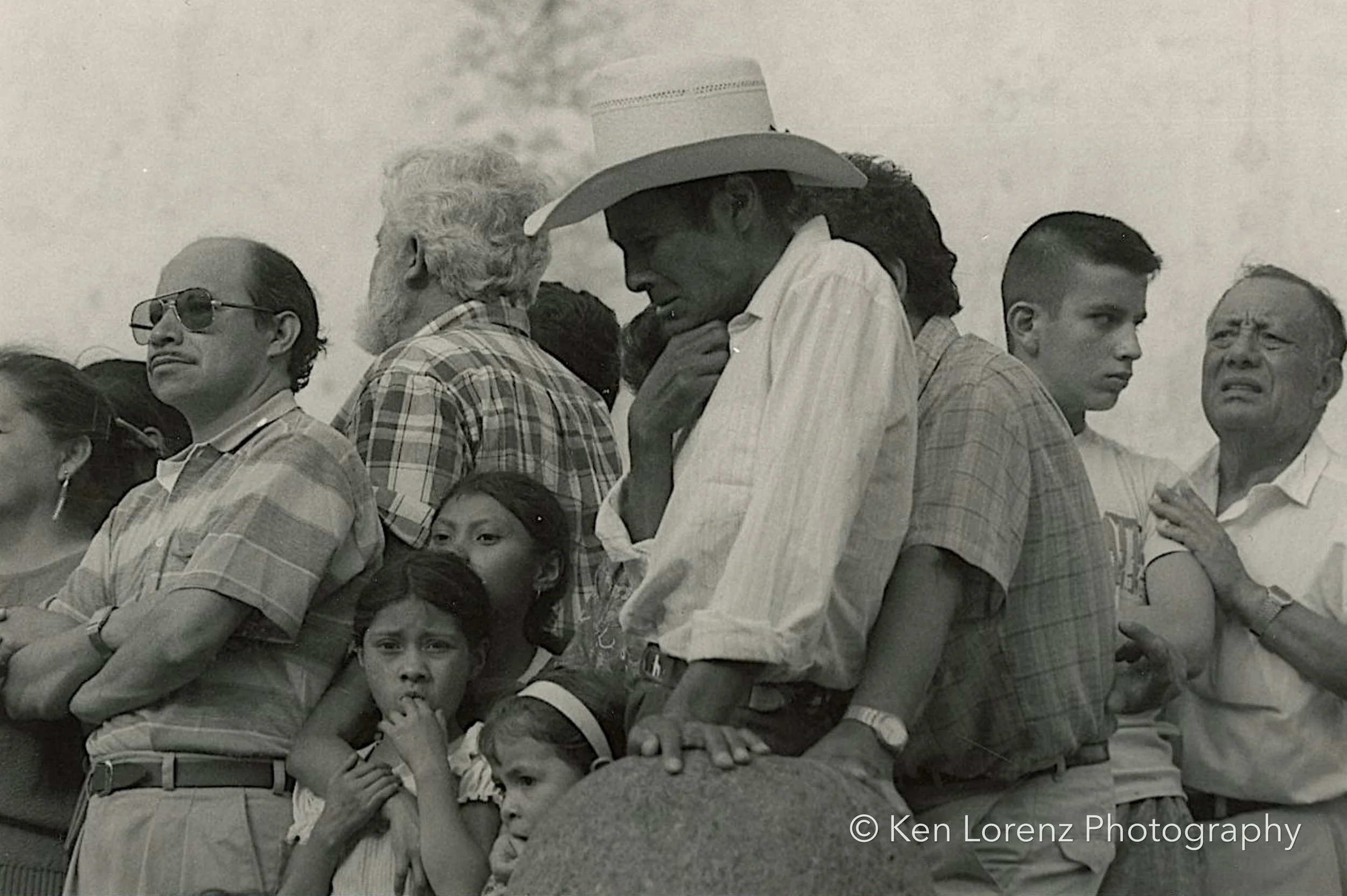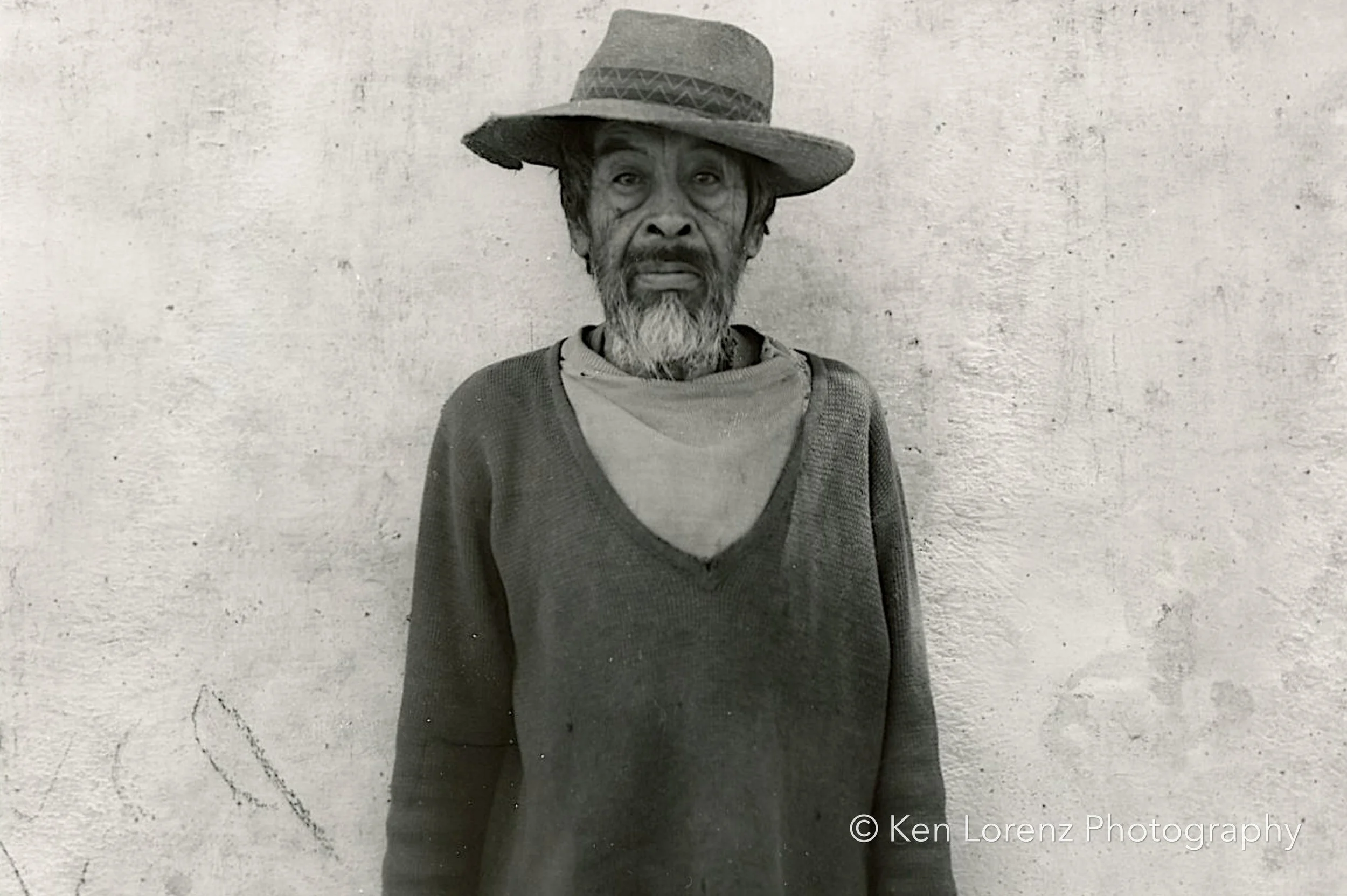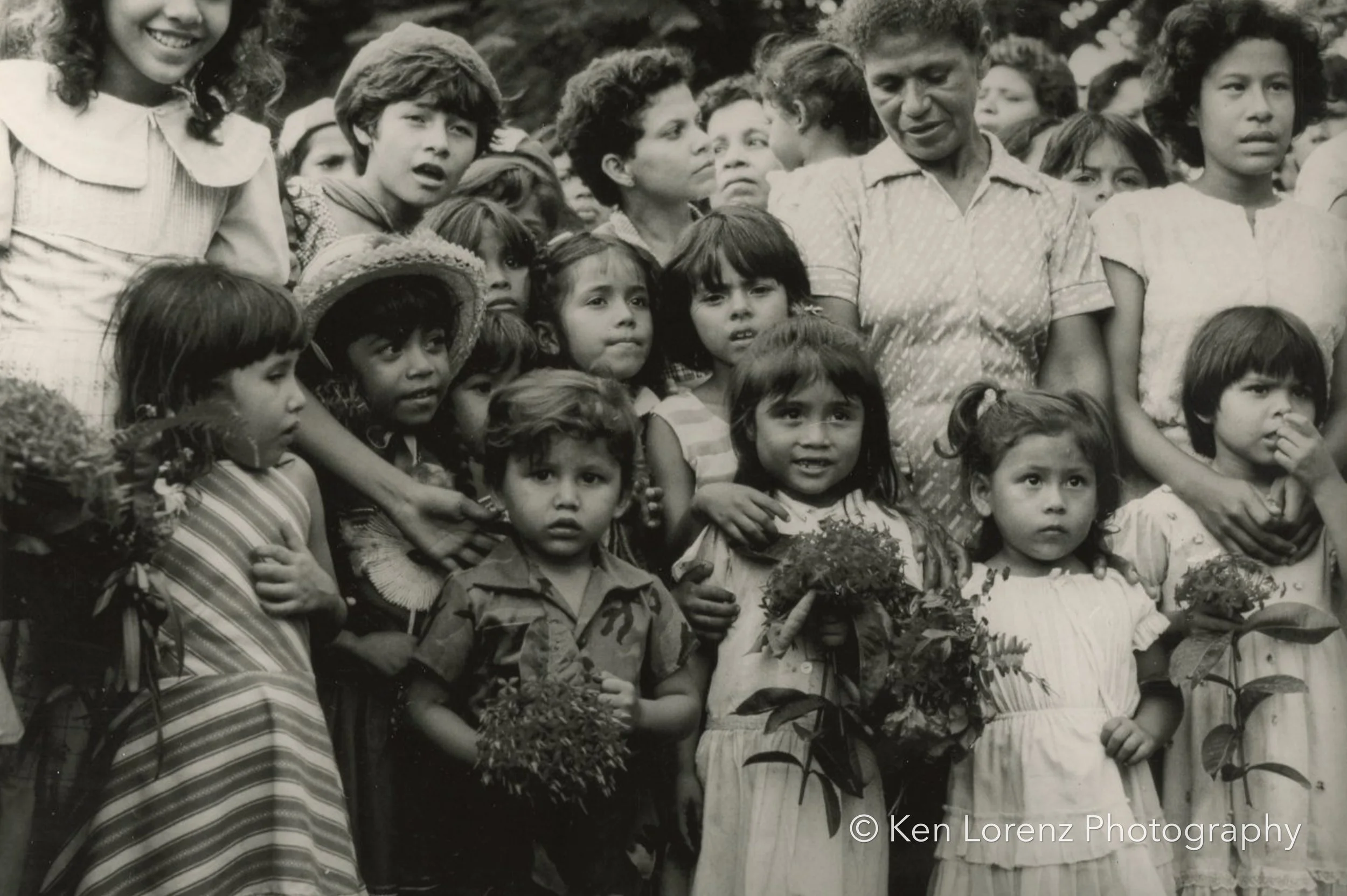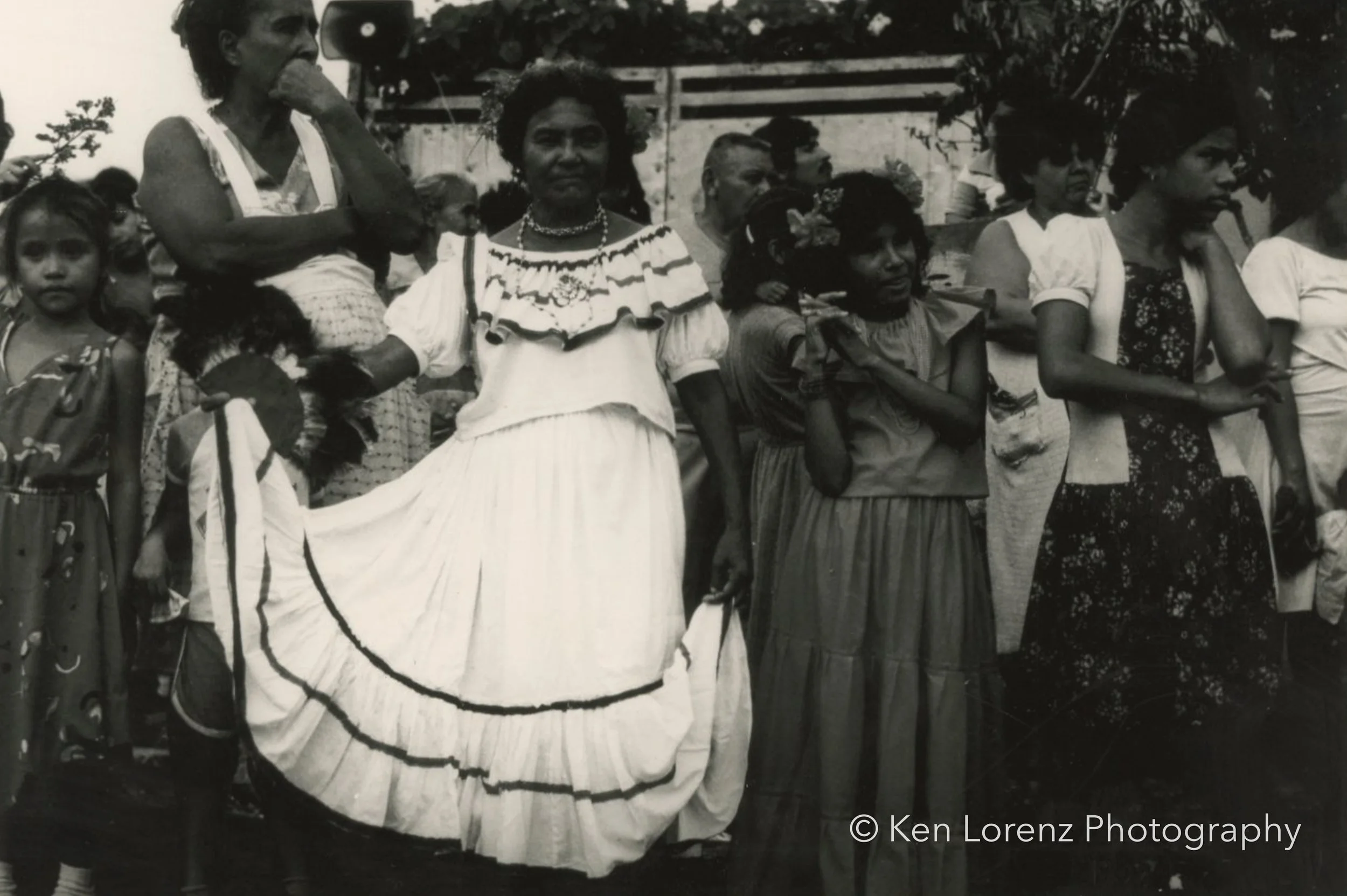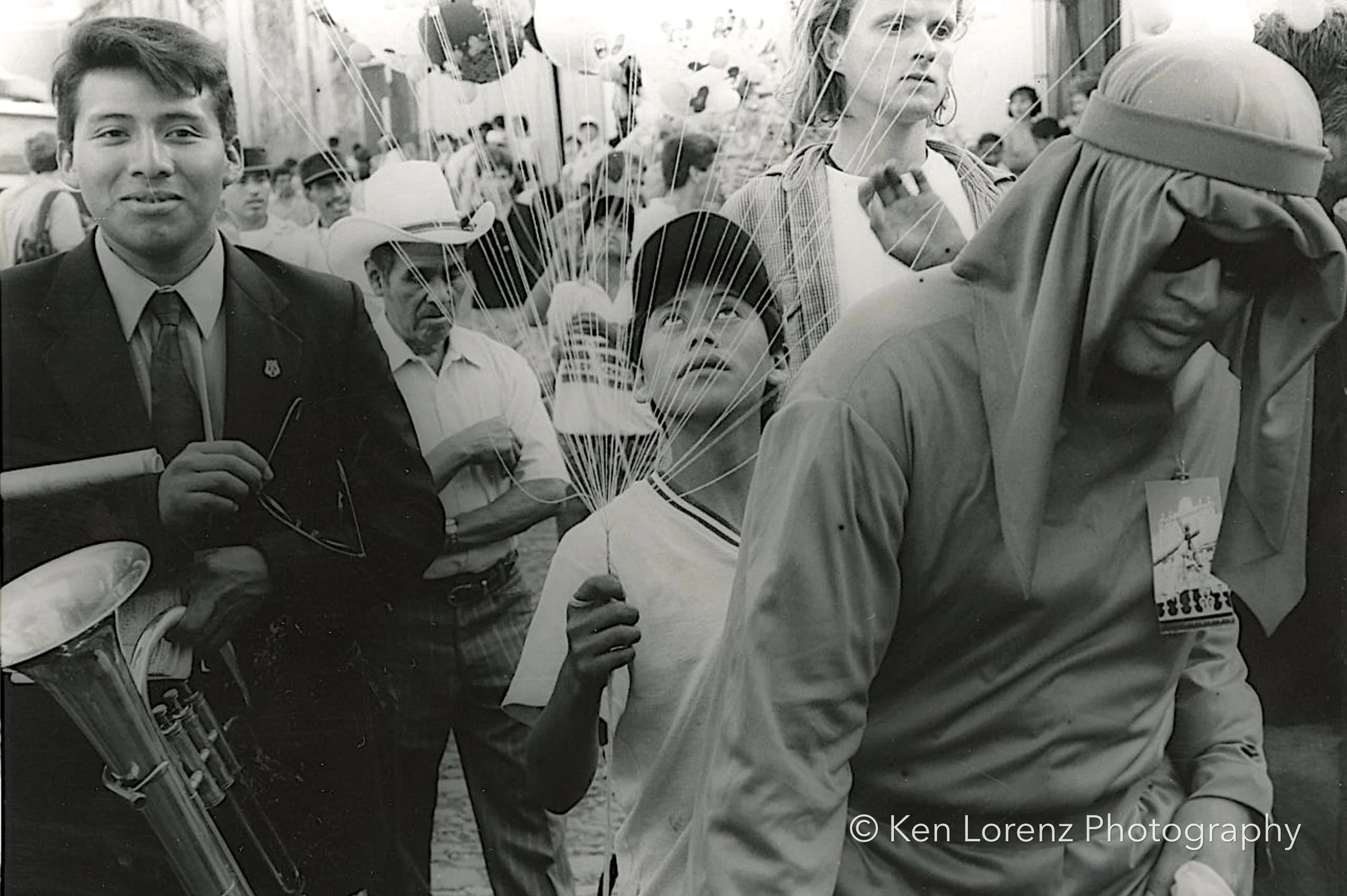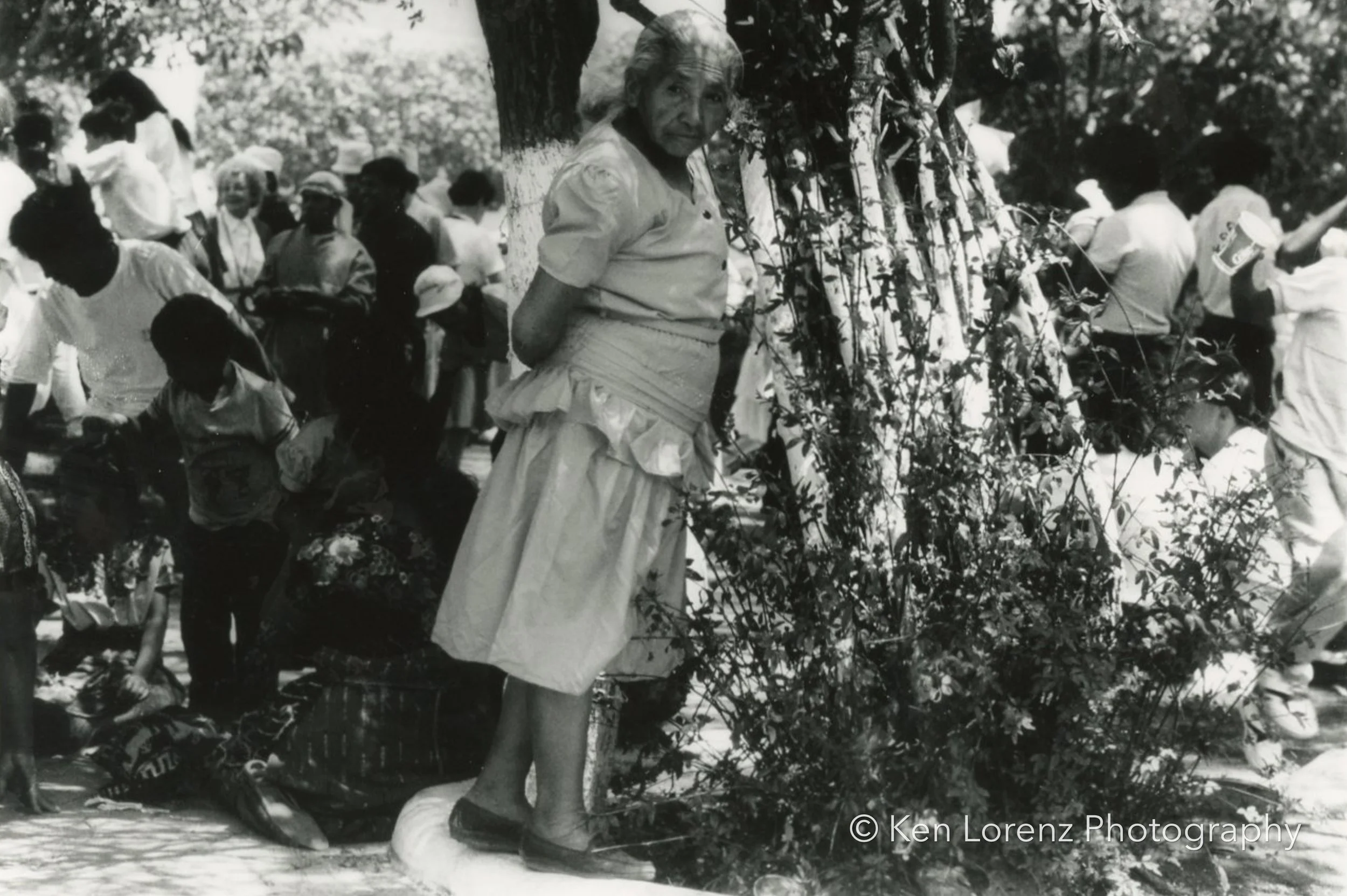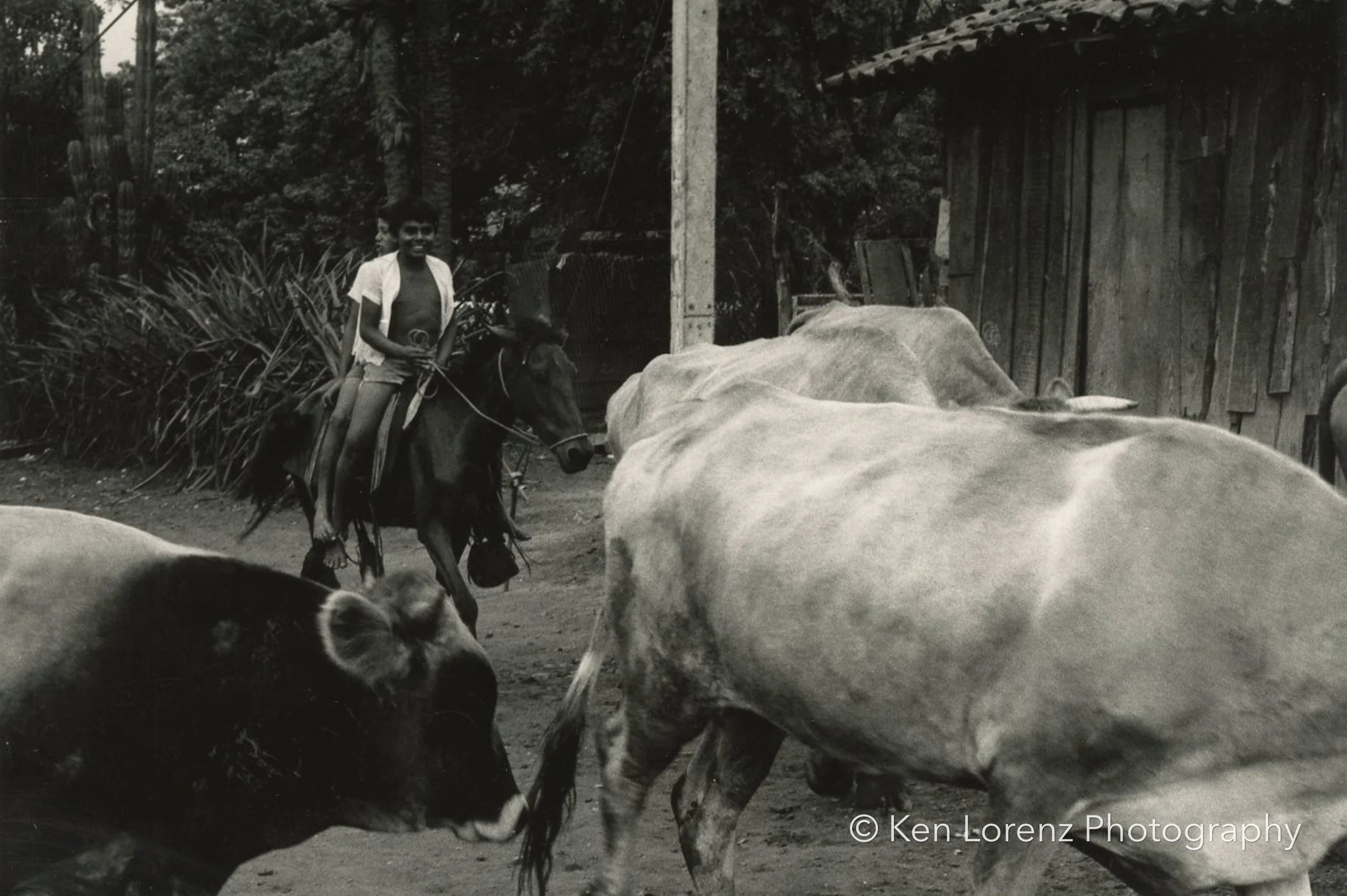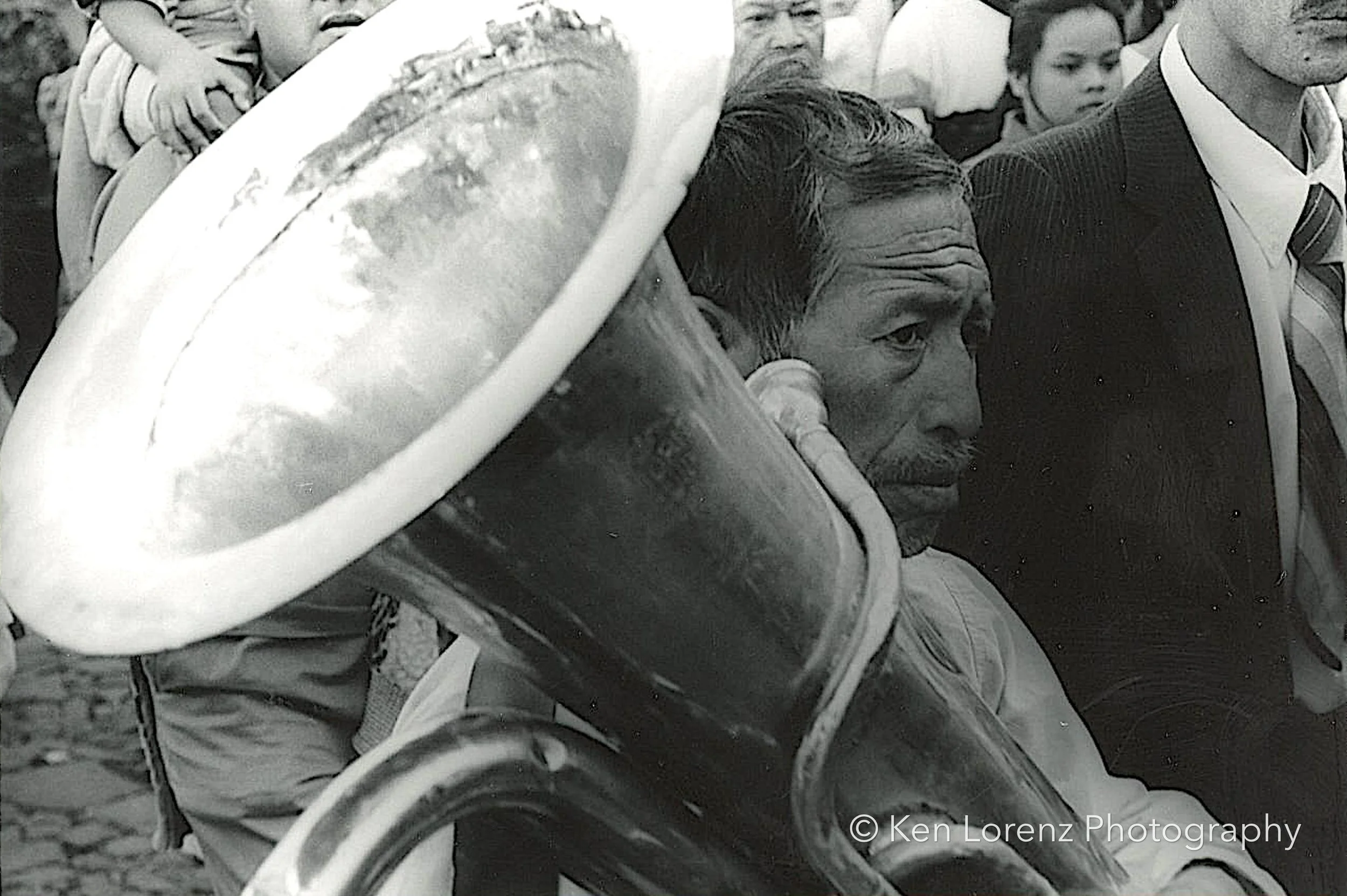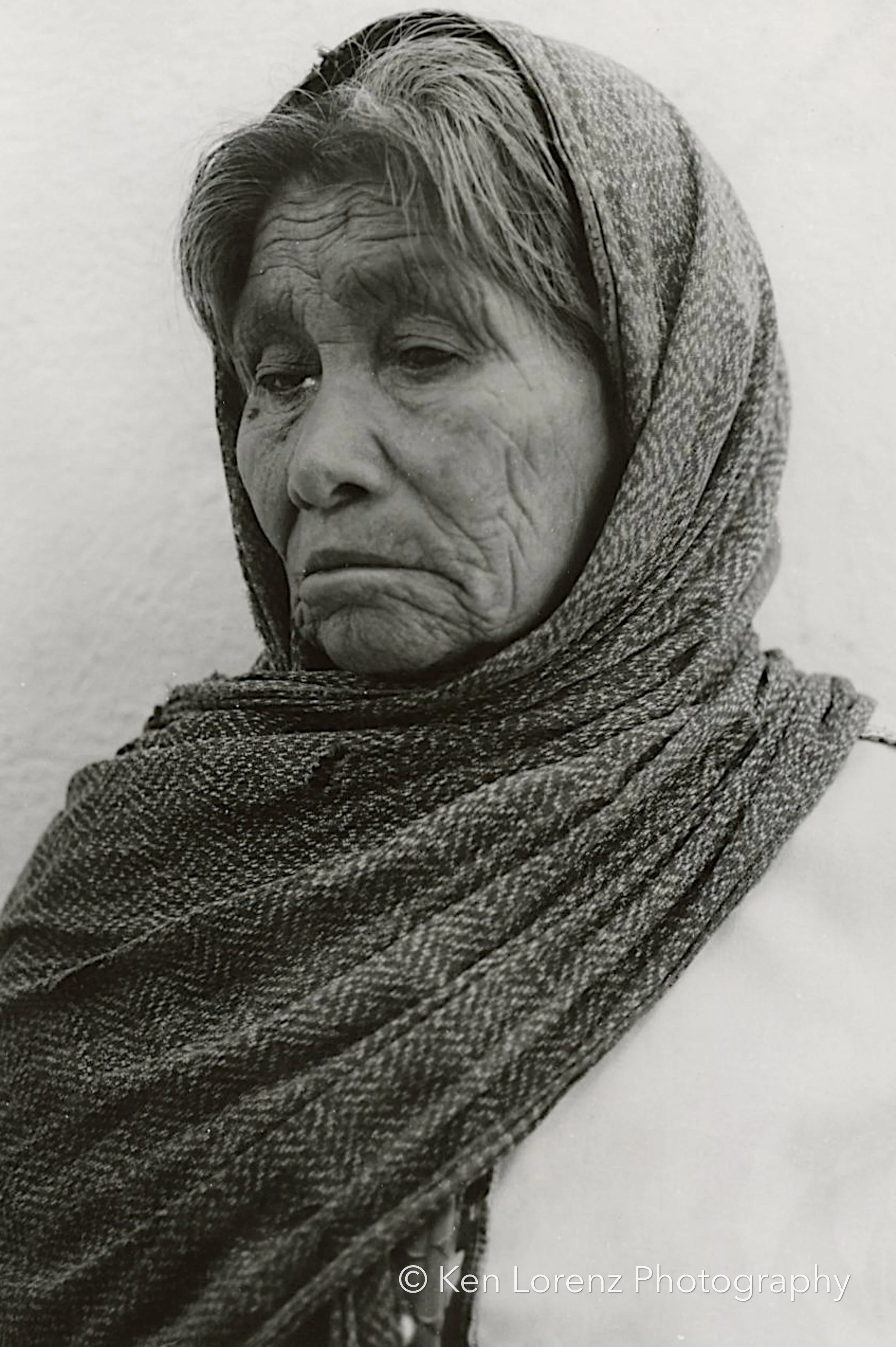Other Americas
Disclaimer: This poster was originally designed for a 1991 exhibition. The artist acknowledges that the term “Third World” is now considered outdated and may be misleading, and wishes to contextualize its use within the historical period of the work’s creation.
Travels Through Central America
Between the early 1980s and the mid-1990s, I spent over a decade traveling through Guatemala, El Salvador, Honduras, and Nicaragua. The resulting body of work, Third World Americas, was shaped by the socio-political turbulence of the time. Moving through Central America during those years was both uneasy and unsettling.
To describe the atmosphere as “politically charged” barely scratches the surface. There was a palpable restlessness in the air—crackling megaphones filled the streets at dawn, summoning crowds to rally, protest, and chant. Demonstrations seemed to erupt daily, driven by everything from military repression to food shortages and foreign intervention.
Smiles were rare, yet paradoxically, the people remained warm and generous. There was an ever-present tension—an undercurrent of watchfulness that never quite left anyone’s eyes. It wasn’t uncommon to encounter female militia patrolling village streets in mismatched military clothing, rifles casually slung over their shoulders. Even young boys—sometimes no older than twelve—carried M-16s, standing guard with a blend of pride, awkwardness, and forced maturity. They played the roles of protectors in a world that had handed them responsibility far too soon.
One phrase echoed everywhere:
“¡El pueblo, unido, jamás será vencido!”
“The people, united, will never be defeated!”
Originally used by the Sandinistas in Nicaragua, this chant became an anthem of resistance throughout Latin America—a unifying cry of hope, strength, and defiance.
The photographs from this period are more than visual documents; they are quiet witnesses to the complexity of life in conflict zones. They speak of endurance, fear, courage, and community. They are fragments of Other Americas—not the ones found in travel brochures or textbooks, but the ones lived daily by people navigating the fragile line between resilience and survival.
